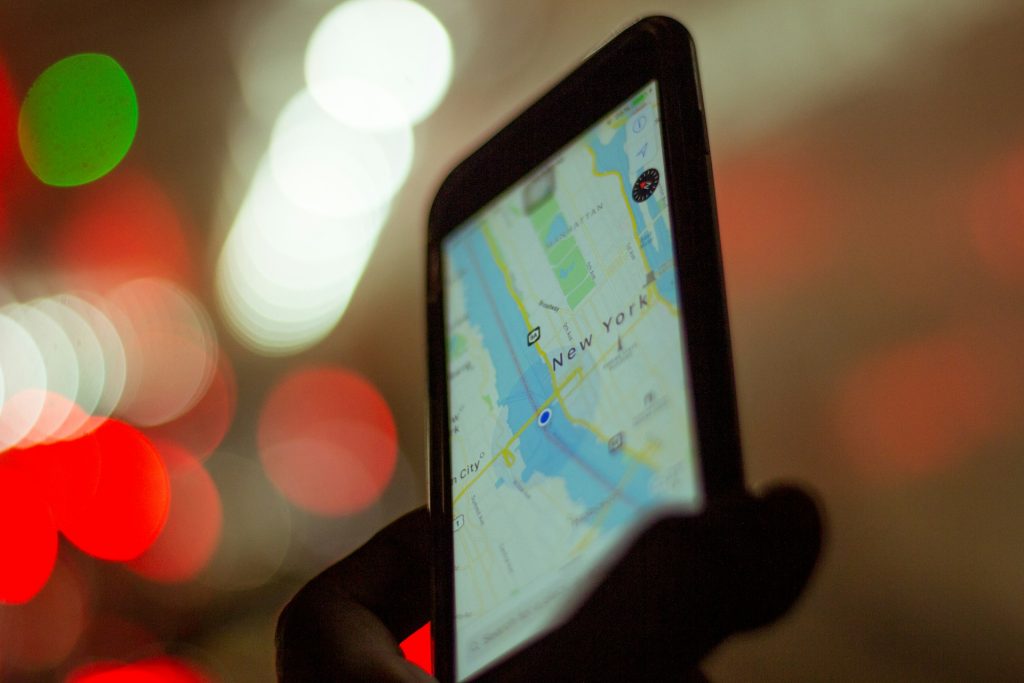
Image Source: unsplash.com
In today’s hyper-connected world, location sharing has become as commonplace as texting. With just a few taps, couples can track each other’s whereabouts in real-time, ostensibly for convenience and safety. But where exactly is the line between caring connection and concerning control? This question has sparked heated debates about privacy, trust, and the evolving nature of modern relationships. Whether you’re currently sharing your location or considering it, understanding the nuances of this practice can help you maintain a healthy balance in your relationship.
1. The Evolution of Location Sharing in Relationships
Location sharing technology has transformed from clunky check-ins to seamless background tracking that requires virtually no effort. What began as occasional “I’m here” text messages has evolved into continuous GPS monitoring through apps like Find My Friends, Life360, and Google Maps. This technological shift has fundamentally changed relationship dynamics, creating new expectations around partner accessibility and accountability. Many couples now consider location sharing a natural extension of their connection, viewing it as no different than knowing each other’s schedules. The normalization of this practice has happened so quickly that many haven’t paused to consider its implications for relationship health and personal boundaries.
2. When Location Sharing Strengthens Relationships
Location sharing can serve as a practical tool for coordination in busy households juggling multiple schedules and responsibilities. For parents, knowing when a partner is leaving work helps with childcare handoffs and dinner planning without requiring constant communication. Many couples report feeling a genuine sense of security knowing their partner can find them in emergencies or if they’re traveling alone in unfamiliar areas. Location sharing often reduces unnecessary worry, and text messages asking “Where are you?” or “When will you be home?” streamline daily logistics. In relationships with strong foundations of trust, location sharing typically operates in the background as a convenience rather than a surveillance tool.
3. Red Flags: When Location Sharing Becomes Controlling
Location sharing becomes problematic when it’s demanded rather than mutually agreed upon, especially when refusal leads to conflict or accusations. Partners who constantly monitor movements, question every deviation from routine or become upset about brief periods of unavailability are exhibiting controlling behavior that often escalates over time. According to relationship experts, location tracking can become a digital form of coercive control, a pattern of behavior that undermines a person’s autonomy and creates power imbalances. Research from the National Resource Center on Domestic Violence indicates that digital surveillance tools are increasingly used in abusive relationships to monitor and restrict partners’ movements. When location sharing creates anxiety or leads to behavior modification—like avoiding certain places to prevent questioning—it’s crossed into unhealthy territory.
4. The Privacy Paradox in Intimate Relationships
Individuals must maintain personal boundaries and spaces for independent growth and self-reflection even in committed relationships. The privacy paradox emerges when we simultaneously value transparency with our partners while needing personal space—both physically and psychologically. Many relationship therapists argue that healthy partnerships require a balance of togetherness and separateness, with each person maintaining their individual identity. Privacy isn’t secrecy—it’s about having the autonomy to process thoughts, emotions, and experiences without constant observation or explanation. Cultural expectations often pressure couples to share everything, including location data, under the misguided belief that complete transparency equals commitment and love. Finding the right balance requires honest communication about comfort levels and recognition that privacy needs may change throughout a relationship’s lifecycle.
5. Setting Healthy Boundaries Around Location Sharing
Couples should explicitly discuss their motivations for location sharing before implementing it, distinguishing between convenience and control-based reasons. Healthy location sharing includes mutual agreement about when tracking is appropriate and when it should be paused for privacy (like during therapy sessions, surprise planning, or personal reflection time). Partners should establish clear communication protocols for when someone goes “off the grid,” preventing unnecessary worry while respecting independence. Regular check-ins about comfort levels with location sharing help ensure the arrangement continues to serve both partners as the relationship evolves. Remember that healthy relationships are built on trust that exists independently of technological verification—your partner should trust you even when they can’t track your movements.
6. The Trust Factor: Building Confidence Beyond GPS
True relationship security comes from consistent reliability and emotional safety, not from knowing your partner’s physical location at all times. Trust develops through patterns of honesty, kept promises, and respectful behavior—none of which require GPS confirmation. Many couples who become overly dependent on location sharing find their fundamental trust issues remain unresolved, merely masked by technological monitoring. Relationship experts suggest that couples struggling with trust might benefit more from counseling than from surveillance apps that treat symptoms rather than underlying issues. Building genuine trust requires vulnerability, open communication about insecurities, and the courage to give partners freedom without constant verification.
Finding Your Personal Location-Sharing Balance
Every relationship has unique dynamics that influence how location sharing fits into the partnership. What works for one couple might feel invasive to another, making it essential to develop guidelines that respect both individuals’ comfort levels. The healthiest approach treats location sharing as an opt-in convenience rather than a relationship requirement or trust test. Remember that technology should enhance your relationship, not replace fundamental trust or become a source of conflict and control. Ultimately, the goal is to create a relationship where you feel secure enough that you don’t need constant location updates, even if you choose to use them for practical purposes.
Have you and your partner discussed boundaries around location sharing? What guidelines have worked best for maintaining both connection and independence in your relationship? Share your experiences in the comments below.
Read More


